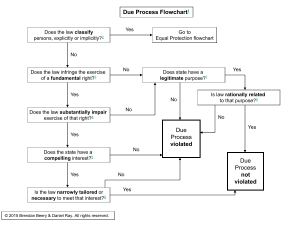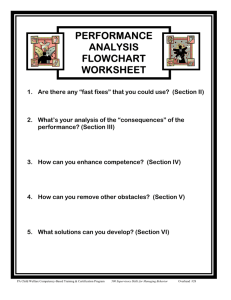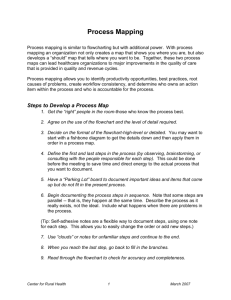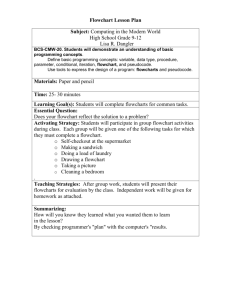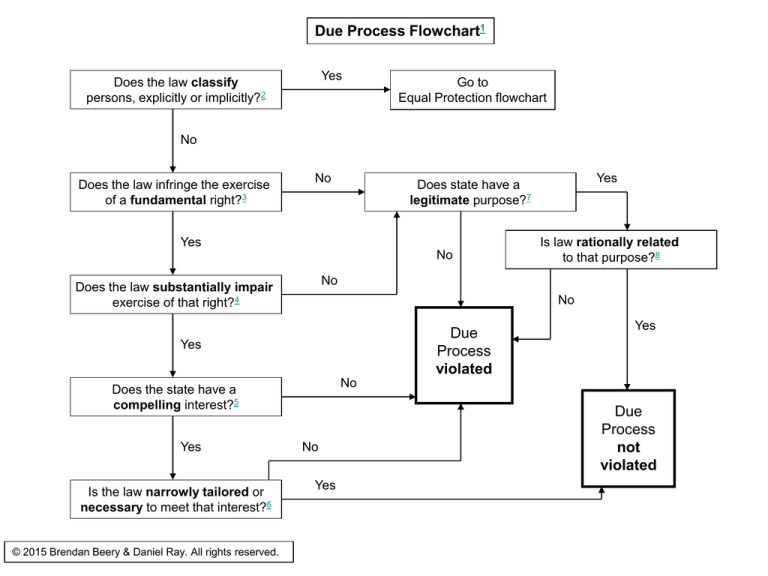
Due Process Flowchart1
Yes
Does the law classify
persons, explicitly or implicitly?2
Go to
Equal Protection flowchart
No
Does the law infringe the exercise
of a fundamental right?3
No
Yes
No
No
Due
Process
violated
Yes
© 2015 Brendan Beery & Daniel Ray. All rights reserved.
Yes
No
Does the state have a
compelling interest?5
Is the law narrowly tailored or
necessary to meet that interest?6
Is law rationally related
to that purpose?8
No
Does the law substantially impair
exercise of that right?4
Yes
Yes
Does state have a
legitimate purpose?7
No
Yes
Due
Process
not
violated
Notes to Due Process Flowchart
Note 1. This basic due process analysis is used when the government, usually by statute or regulation, interferes
(whether purposefully or not) with the exercise of certain substantive rights. Note, importantly, that this model does
not apply to deprivations of procedural due process. Additionally, some fundamental rights (e.g., the right to
abortion; textual rights) are analyzed using different methodologies. Return to flowchart.
Note 2. If the law does explicitly or implicitly classify persons, then begin with the Equal Protection flowchart to
check for suspect or quasi-suspect classifications. Return to flowchart.
Note 3. The Supreme Court has recognized a variety of fundamental rights in addition to those described in the Bill
of Rights. Those discussed in class include the right to procreate (Skinner v. Oklahoma, 316 U.S. 535 (1942)); the
right to use contraceptives (Griswold v. Connecticut, 381 U.S. 479 (1965)); the right to marry (Zablocki v. Redhail,
434 U.S. 374 (1978)); the right to live together as a family (intimate association) (Moore v. East Cleveland, 431 U.S.
494 (1977) (plurality)); and the right to care, custody, and control of one’s minor children (Troxel v. Granville, 530
U.S. 57 (2000) (plurality)). Return to flowchart.
Note 4. See Zablocki v. Redhail, 434 U.S. 374, 387 & n. 12 (1978) (law “directly and substantially” interfered with
fundamental right to marry by making void and criminalizing marriages in violation of law; it absolutely prevented
some from marrying, coerced others into forgoing right to marry, and was a serious intrusion on freedom of choice to
marry even as to those who could comply); but cf. Califano v. Jobst, 434 U.S. 47, 54, 57-58 (1977) (provision in
Social Security Act that decreased monthly benefit by $20 upon marriage was not an attempt to interfere with
marriage decision, even though law might impact beneficiary’s desire to marry or make some possible marriage
partners less desirable than others). Note 4, cont’d. Return to flowchart.
© 2015 Brendan Beery & Daniel Ray. All rights reserved.
Notes to Due Process Spreadsheet
Note 4, cont’d. See also Moore v. East Cleveland, 431 U.S. 494, 498 (1977) (regulation of family living
arrangements was not an “incidental result” of ordinance); but cf. Bowen v. Gilliard, 483 U.S. 587, 601-03 & n. 17
(that some families might decide to change living arrangements to avoid loss of AFDC benefits does not mean law
was designed or had direct effect of intruding on family living arrangements; Court characterized effect as “indirect”);
Lyng v. Castillo, 477 U.S. 635, 638 (1986) (Food Stamp Act did not “directly and substantially” interfere with family
living arrangements by aggregating household income) (quoting Zablocki). Return to flowchart.
Note 5. The Court has never articulated a test or any comprehensive criteria for deciding whether an alleged
government interest is compelling. The government bears the burden of proving that its interest is compelling.
Return to flowchart.
Note 6. To meet this requirement, the government generally must show that it has used the “least restrictive means
of achieving some compelling state interest.” Thomas v. Review Bd. of Indiana Employ. Sec. Div., 450 U.S. 707
(1981). Return to flowchart.
Note 7. See, e.g., Lawrence v. Texas, 539 U.S. 558, 578 (2003) (state has no legitimate interest in criminalizing
sodomy between consenting adults in private setting) (not explicitly applying rational basis review). The government
need not articulate the purpose behind a law. In matters of ordinary social or economic legislation, if the
government does not articulate a purpose for the law, courts are free to assume any legitimate purpose and it does
not matter if such an assumed purpose was the actual purpose for the law. The burden is on the party attacking the
law to show no legitimate purpose. See FCC v. Beach Communications, Inc., 508 U.S. 307 (1993) (equal protection
case). Return to flowchart.
© 2015 Brendan Beery & Daniel Ray. All rights reserved.
Notes to Due Process Spreadsheet
Note 8. The question here is whether the government sought to achieve its purpose in a patently arbitrary or
irrational way. See United States R.R. Retirement Bd. v. Fritz, 449 U.S. 166 (1980) (equal protection case). A law
that does not implicate fundamental rights is presumed valid, and the court will ask “whether any state of facts either
known or which could reasonably be assumed affords support for” the law. United States v. Carolene Products Co.,
304 U.S. 144 (1938). See also Beach Communications, supra; Williamson v. Lee Optical, 348 U.S. 483 (1955).
Return to flowchart.
© 2015 Brendan Beery & Daniel Ray. All rights reserved.

